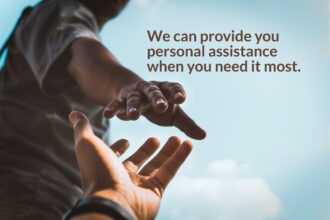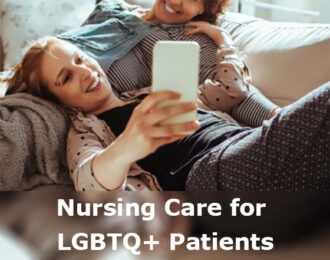How to Care for Aging Parents When You Can’t Be There

Wall Street Journal January 9,2021 by Julie Jargon
When Corey Spiegel’s 75-year-old mother fell and broke her hip and wrist in November and needed emergency surgery, Ms. Spiegel scrambled to figure out how to transport her home from rehab. She interviewed caregivers over FaceTime and arranged for groceries and medical supplies to be delivered.
It would have been easier if she could have traveled from her Los Angeles home to be with her mom, Gail Wolfberg, in New Jersey but Covid-19 made that nearly impossible.
Caring for aging loved ones has always been difficult, and the pandemic has only complicated it—especially when family members live in different cities or states. More people than ever are in caregiving roles: Nearly one in five American adults are providing unpaid care to another adult, according to the National Alliance for Caregiving and the AARP.
So how do you begin to provide help remotely? The first step, elder-care experts say, is to determine the level of care your loved one needs. The care continuum typically follows three stages: check-ins, full-time monitoring, and hands-on assistance. Here are some ways elder-care experts say tech can help with all three.
Stage 1: Lay the Groundwork
Set up communication and tech support. Experts recommend setting up a good communication plan before there’s an emergency, and while your loved one is still independent. The plan needs to consist of more than a landline phone. Smartphones and tablets are better, perhaps even a smart speaker—even if that means setting up home Wi-Fi.
As people develop comfort with technology, it is easier to reach them, not just for communication but for managing finances, health appointments and more. The ability to navigate devices and apps also provides cognitive stimulation through online entertainment, books and games. And it can cut down on loneliness.
Older Adults Technology Services Inc. (OATS), a nonprofit that provides free tech courses for seniors at its centers around the country, has moved its courses online, with video tutorials that offer instructions on everything from setting up an Apple ID to using Zoom. OATS also provides device recommendations and operates a hotline that seniors can call for tech support (920-666-1959).
“People tend to think seniors need a senior-friendly tablet, but what people really need is a functioning laptop or tablet on the same platform as the person providing tech support for them,” said Tom Kamber, founder and executive director of OATS. “If you’re using Apple products, it’s best to have your parent use an Apple product so that you’re looking at the same screen when you get the inevitable call for tech help.”
Many families just want the peace of mind that comes with checking in on a loved one who lives alone. Amazon recently rolled out a new set of Alexa features called Care Hub that require both parties to have an Amazon account. Using the Alexa smartphone app, family members can receive notifications each day when their loved one first interacts with the Echo smart speaker—or if there’s no activity by a certain time.
They can also “drop in” and say hi through the speaker, to make sure everything is OK. The aging relative can designate a family member as an emergency contact. If help is needed, he or she can say, “Alexa, call for help” – and Alexa will call, text and send a push notification to the emergency contact. If you’re giving your loved one an Echo Show video speaker, you can even set it up yourself beforehand.
Arrange transportation. Even if your loved one can still drive, he or she might not be able to drive at night or after a medical procedure. Area Agencies on Aging have information on local transportation services for seniors, and the major ride-share services have made it easier to arrange rides for seniors. Family members can request rides for loved ones through Uber or Lyft, which require drivers and riders to wear masks. GoGoGrandparent allows seniors without a smartphone to request an Uber or Lyft by phone (855-464-6872).
As Ms. Spiegel learned while trying to arrange a ride for her mom, not all services allow drivers to assist an elderly passenger to their door; many can only drop them off at the curb. It’s a good idea to check their rules—and your parents’ insurance coverage—ahead of time, in case you need to arrange for physical assistance.
Stage 2: Double Down on Safety
Monitor. Once you become aware that your loved one has physical or cognitive issues that could pose a safety risk, it’s a good idea to set up a medical alert system. It can be as simple as a wearable device that will detect and notify emergency responders of a fall, said Amy Goyer, AARP’s family and caregiving expert. Ms. Goyer said when choosing a medical alert system, pick one that has been around for a while, and take a close look at the contract. “You should be able to cancel it at any time,” she said. “If you decide a wearable is best, ask if it’s waterproof, because a lot of falls happen in the shower.”
The home-monitoring rabbit hole is deep, ranging from sensors that alert you when the person gets out of bed in the morning to smart pill-dispensers that notify you if your loved ones haven’t taken their medication. There are even GPS monitors that track their whereabouts. “I always suggest caregivers try things out themselves before they suggest their loved ones use them,” Ms. Goyer said. “You can also set up a device first, and then send it to them.”
Facilitate socialization. Even if you are in frequent contact, it’s nice for your loved ones to speak to other people, especially now, when in-person social interactions are limited. “Yes, you need to make sure they’re taking their medication and getting to the doctor—but addressing isolation is just as important to their health,” Ms. Goyer said.
The AARP has a “friendly voices” program in which volunteers call seniors who sign up to receive them. Seniors can also pair up with college students for companionship through Papa, an app Christopher Mims wrote about. “Papa Pals” also provide transportation, errand-running and other services for seniors in several states.
Stage 3: Arrange In-home Care
Find help. Once someone has trouble with two or more daily activities such as bathing or dressing, families should consider an at-home caregiver, said Seth Sternberg, chief executive of Honor, a company that provides non-medical home care.
Home-based caregiving is a highly fragmented industry; agencies can be found through local Area Agencies on Aging or by referral from doctors and friends. Honor has partnered with agencies in seven states to standardize in-home care. The company brings a tech element, with an app where family members receive daily notes from caregivers and notifications when they arrive and leave.
The pandemic has made finding home caregivers trickier than ever. It’s important to check the agency’s Covid-19 safety protocols and its ability to backfill care if a caregiver becomes ill or has to quarantine.





